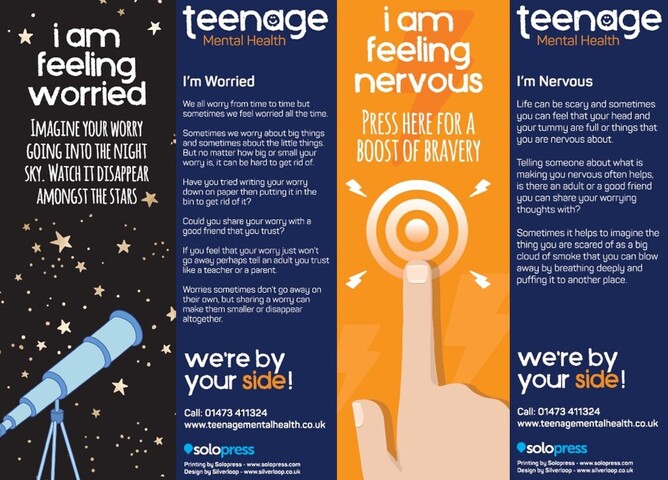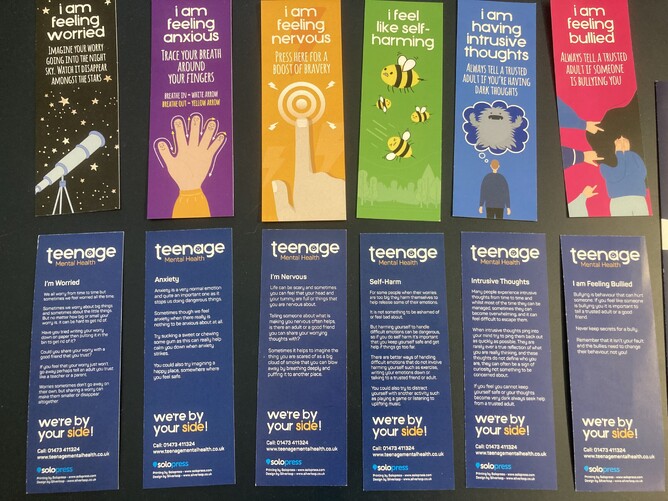Unravelling the Threads of Worry in Children and Teenagers
As part of our Mental Health Bookmarks for Schools campaign, we recognize that worry and nervousness are common emotions that children and teenagers might be experiencing, especially during times of change like returning to school. Nervousness is a natural response to new situations and challenges, but understanding and managing this emotion is key to promoting positive mental health.
Embracing nervousness as a part of our mental health campaign, let's create an environment where children and teenagers can express their feelings without judgment. By understanding and addressing their emotions, we empower them to navigate challenges and transitions with confidence, fostering positive mental well-being.
As the sun rises on a new day, so do the myriad worries that children and teenagers often grapple with. From the fluttering butterflies in the stomach before a big exam to the gnawing unease of fitting in with peers, the spectrum of nervousness and worry spans wide across the developmental stages. In this blog, we delve into the fascinating world of young minds, exploring the reasons why children and teenagers experience nervousness and worry. While their concerns might differ in nature, the underlying mechanisms often reveal striking similarities.
Here are some insights and tips to help children and teenagers navigate nervousness.
1. Biological Foundations
Nervousness, the companion of many life experiences, has its roots in our biological makeup. Children and teenagers alike can experience the rush of adrenaline, an evolutionary response known as the "fight or flight" instinct. This biological reaction, aimed at ensuring survival, leads to heightened alertness and a sense of nervousness. Whether facing a class presentation or navigating social interactions, this shared physiological response underscores the similarity between children and teenagers in how they process anxiety-inducing situations.
2. Cognitive Development
While children and teenagers might encounter different sources of worry, their cognitive development plays a pivotal role in shaping how they experience and manage these feelings. Children tend to worry about concrete matters like monsters under the bed or separation from parents. These worries are closely linked to their limited understanding of the world, often fed by their vivid imaginations.
On the other hand, teenagers grapple with worries that reflect their burgeoning abstract thinking. Academic pressures, social acceptance, and future uncertainties dominate their concerns. The increased ability to envision potential outcomes, both positive and negative, contributes to the depth and complexity of their worries.
3. Social Dynamics
Children and teenagers operate in distinct social landscapes, which significantly influence their worries. For children, the immediate family and close circle form their primary social sphere. Worries often revolve around acceptance by caregivers, fulfilling expectations, and gaining approval.
Teenagers, while still seeking approval from family, expand their social networks to include peers. The quest for belonging intensifies, leading to concerns about popularity, social status, and peer acceptance. This transition can foster worries about identity and self-worth as teenagers compare themselves to others.
4. Emotional Regulation
Both children and teenagers are in the process of developing emotional regulation skills. While the nature of their worries might differ, the challenges of managing these emotions are parallel. Children often need guidance in understanding and expressing their feelings, while teenagers grapple with heightened emotional intensity and learning to navigate the rollercoaster of emotions that adolescence brings.
5. Impact of Technology
In the modern age, the impact of technology cannot be ignored. Both children and teenagers are exposed to a barrage of information and social media, which can exacerbate their worries. Cyberbullying, body image issues, and unrealistic expectations propagated online can intensify feelings of nervousness and anxiety.
Tips to Help Young Children Feeling Nervous:
Create a Safe Space: Establish a comforting environment where your child feels secure. This could be a cozy corner in their room or a special cuddly toy that provides them with a sense of comfort when they're feeling nervous.
Open Communication: Encourage your child to express their feelings. Listen attentively and validate their emotions, letting them know that it's okay to feel nervous and that you're there to support them.
Use Play and Creativity: Engage in imaginative play or creative activities like drawing or storytelling. These outlets provide children with a way to process their feelings and worries in a non-threatening manner.
Establish Routines: Consistent routines can offer predictability, which can be reassuring for young children. Knowing what to expect throughout the day can help alleviate some of their anxiety.
Breathing Exercises: Teach simple breathing exercises, such as "flower breathing" (inhale through the nose like smelling a flower, exhale through the mouth like blowing out a candle). These techniques can help calm their nervous energy.
Tips to Help Teenagers Feeling Nervous:
Encourage Self-Expression: Encourage your teenager to express their feelings through journaling, writing, art, or music. Creative outlets provide a productive way for them to process their emotions.
Promote Physical Activity: Engaging in regular physical exercise can help alleviate stress and anxiety. Encourage your teen to find a physical activity they enjoy, whether it's jogging, dancing, or practicing yoga.
Teach Mindfulness: Introduce mindfulness techniques such as meditation and deep breathing. These practices can help teenagers stay grounded and manage the racing thoughts that often come with nervousness.
Break Tasks into Manageable Steps: If your teen is nervous about a big task, help them break it down into smaller, achievable steps. This approach can make daunting challenges feel more manageable.
Social Support: Encourage your teenager to connect with friends, family, or a counsellor. Having a support network to talk to can provide a sense of relief and reassurance during times of nervousness.
Nervousness and worry are universal emotions that thread through the tapestry of childhood and adolescence.
As children evolve into teenagers, their worries might transform in nature, but the underlying mechanisms and challenges of managing these emotions remain remarkably similar. Recognising these commonalities can pave the way for empathetic communication, offering support and guidance as young minds learn to navigate the maze of worries that come with growing up in an ever-changing world.
Remember that both young children and teenagers benefit from a supportive and understanding environment. Tailor your approach based on their age and individual needs, and always keep the lines of communication open. Your guidance and empathy can make a significant difference in helping them navigate their nervous feelings.
You can see all our bookmarks and find out how to order them here





